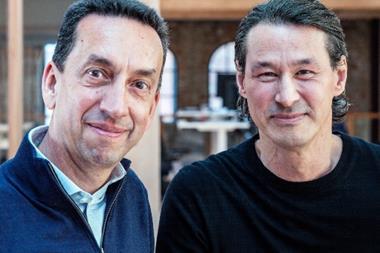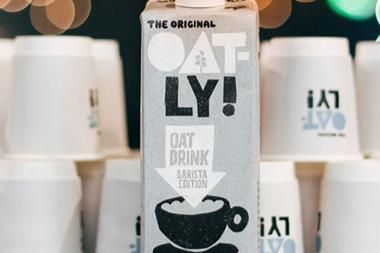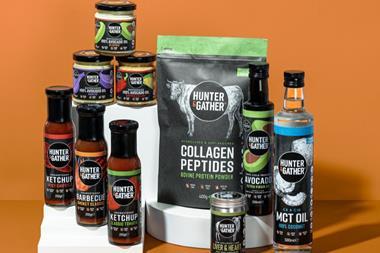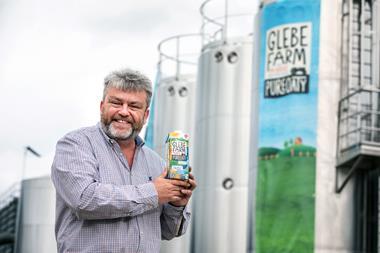Oatly is struggling to make it work as a corporate giant, with investors unnerved by mounting costs, strained sales, and a series of PR gaffes. What is going wrong?
For years, Oatly played the plucky underdog. Created by two Swedish brothers using “nerdy nutrition science” in the 1990s, it suffered years of knock-backs before it finally made inroads into the mainstream grocery market in 2014. Then, with a brave relaunch based on some provocative marketing, Oatly found its voice with a bold and punchy tone that was unafraid to call out what it saw as the ills of the big, bad global dairy industry.
The fact it drew the ire of Swedish dairy producers only helped its cause, as they hauled Oatly to court in 2014 accusing it of making milk seem “unmodern” and “scaring [people] into thinking milk is dangerous”.
From that moment, Oatly’s image thrived on its image as an anti-establishment provocateur. It earned a cult-like fanbase and legions of fans willing to shell out for its product. By the end of 2021, its annual revenues had reached $643m. And its oat-based milks, yoghurts and ice creams are now sold in more than 20 countries around the world.
In May 2021, it capped its meteoric rise with an IPO on Nasdaq at a punchy $10bn valuation – making it worth almost twice as much as those Swedish dairy producers that had hauled it before judges seven years before.
These days, however, all is not well. In July last year, a scathing 124-page report from New York investment managers Spruce Point Management (SPM) alleged ‘walls were collapsing’ at the plant-based milk brand. “While investors are enamoured with its sales growth … and its commitment to ESG practices,” said the report, “we believe they should be focused on its loss of market share in Sweden and the US, minimal barriers to entry, lack of competitive advantages, rising commodity input costs, and supply challenges created partly through poorly planned production facilities.”
These factors meant not only would Oatly “sorely disappoint investors”, SPM said, but would ensure it would never achieve profitability.
“Dare I say it, they have a rather corporate, big business feel about them”
The report was dismissed by Oatly as “false and misleading claims” from short-sellers that stood to financially benefit from tanking its valuation. Nevertheless the attack drove its share price down. And the decline has continued ever since. From an IPO price at $17 per share, Oatly is now scraping along at around $2.55 as investors wince at the oat milk brand’s ballooning losses.
In the company’s first full-year results since going public, losses climbed to $79.8m in the final three months of 2021, up from $37m in the same quarter the year before. Overall, losses hit $215m for the year, a 270% increase.

Yet the problem goes further than just mounting costs. By August it had also cut its sales outlook for 2022 by up to $90m, citing ongoing supply chain disruption and, perhaps more crucially, fewer shoppers than expected making the switch from dairy to plant-based.
It seems like Oatly is now battling to hold on to the market share it secured back in the 2010s as the market froths with competition. From relative obscurity a few years ago, oat milk is now leading the charge in the UK, having overtaken almond milk as the most popular plant-based milk. It now holds 37% of the £146m market, research by Mintel found.
Tesco alone is selling 36 different oat milk SKUs from 14 different brands online. Were penetration to be soaring at the same rate as 10 years ago that might not be a problem for Oatly, but right now the whole category is facing a plateau, according to Thijs Geijer, senior sector economist for food and agriculture at ING. “What you hear from several companies active in these markets is that in the course of this year, growth has stalled following a period of significant growth,” he says. This short-term saturation is being further compounded by a cost of living crisis that is leaving consumers considering their purchases more carefully.

At £1.90 per litre for Oatly Original, it is almost 60% more than its private label equivalents and therefore seriously reliant on its brand image. Unfortunately for Oatly, that too has taken a few knocks in the past two years thanks to a series of PR gaffes.
“Oatly have managed to hold on to their challenger brand positioning for a long time,” says Philip Rayner, co-owner at Cambridgeshire brand Glebe Farm, which found itself on the receiving end of a legal run-in with Oatly (see above). “But they are no longer a challenger brand and are a dominant conglomerate. Actions such as the decision to take us to court demonstrate that shift in position.”
Oatly’s top four PR fails
The case did little for Oatly’s rebel image. But it was just one of a series of missteps. In 2020, under a blog post titled ‘change isn’t easy’, Oatly announced it was accepting a $200m investment from Blackstone, a decision that sparked a backlash thanks to the private equity firm’s links to Donald Trump and deforestation in the Amazon. There have also been allegations of greenwashing and product recalls (see above).
It all adds up to a clumsy transition from challenger brand to corporate giant. “The public statements and communication from Oatly have lacked the sharpness and wit. Dare I say it, they have a rather corporate, big business feel about them now,” says Costas Michalia, group strategic director at Fiora, a digital marketing agency. “I just wonder if Oatly has focused its attention internally and in looking after shareholders the business has somehow lost its fun, approachable and purposeful tone.”
That said, none of these gaffes are fatal, Michalia believes. “The brand is tainted but it will recover.” The “bigger and more interesting question” to be asking is, he believes, “is the business strategy right?”.
In particular, the way in which Oatly is unabashedly prioritising growth over profit. The company opened new facilities in Utah, Singapore and China in 2021, and has said it hopes to open a further three new plants in the US, UK and China by 2023, collectively expanding its production by an additional 450 million litres of plant-based milk.
Oatly shows no signs of rethinking the approach, with a spokesman telling The Grocer: “Investing in our growth is critical to further establish the infrastructure necessary for a high growth global company, and we are experiencing tremendous consumer demand and growth momentum, even in the face of an extremely dynamic operating environment.”
“If you’re just depending on the emotional loyalty of your brand that’s not much fun”
And it’s true that in the world of tech, prioritising growth first and profits second is a well-worn strategy, points out Geijer. First comes scale, then consolidation and finally the remaining players become profitable. “But in food manufacturing it’s different as it’s a tangible product,” he points out. “You need production facilities, you need logistics, marketing and distribution.” In short, scale requires huge capital investment – and seriously patient investors.
It would be a tricky balance for Oatly to strike at the best of times. But facing some stiff economic headwinds, it’s a strategy that becomes even harder to justify in recent months. For like nearly all businesses, Oatly is struggling with soaring inflationary pressures across ingredients, logistics and energy, all of which are squeezing margins. Ongoing Covid-19 restrictions in China also dampened its foodservice performance.

Compounding this are the challenges unique to a business rapidly expanding around the world. The investment in three new production facilities, a $1.7m charge for a European product recall, and a $1.5m impairment associated with a factory in Sweden to name but a few. All of which adds to those eye-watering losses and errant share price.
“With Oatly the main challenge to their profitability has been that while their expansion has been successful, they haven’t been able to catch up operations with that, and at the same time it is a moderate-low margin business,” sums up Rayner. “Oatly have gone for market capture, but there are lots of other brands doing quite a good job now. We’re doing what they would claim to be doing as a small, plucky underdog: overseeing the process from start to finish in a natural way. Whereas they’re now a multinational distributing in different countries, which adds extra cost.”
“It’s a margin issue,” agrees Nigel White, who led marketing at Quorn in the early 2000s. “Because their margins are so tight they’ve got nothing there to weather the storm. Throw in a recession, as well as all the other big players now in the marketplace, and if you’re just depending on the emotional loyalty of your brand that’s not much fun.” Particularly when your plucky underdog status has been brought down a peg or two.
Oatly: is the plucky alt-milk challenger brand plucked?

Oatly is struggling to make it work as a corporate giant, with investors unnerved by mounting costs, strained sales, and a series of PR gaffes. What is going wrong?
 Currently
reading
Currently
reading
Oatly: is the plucky alt-milk challenger brand plucked?
- 2























No comments yet